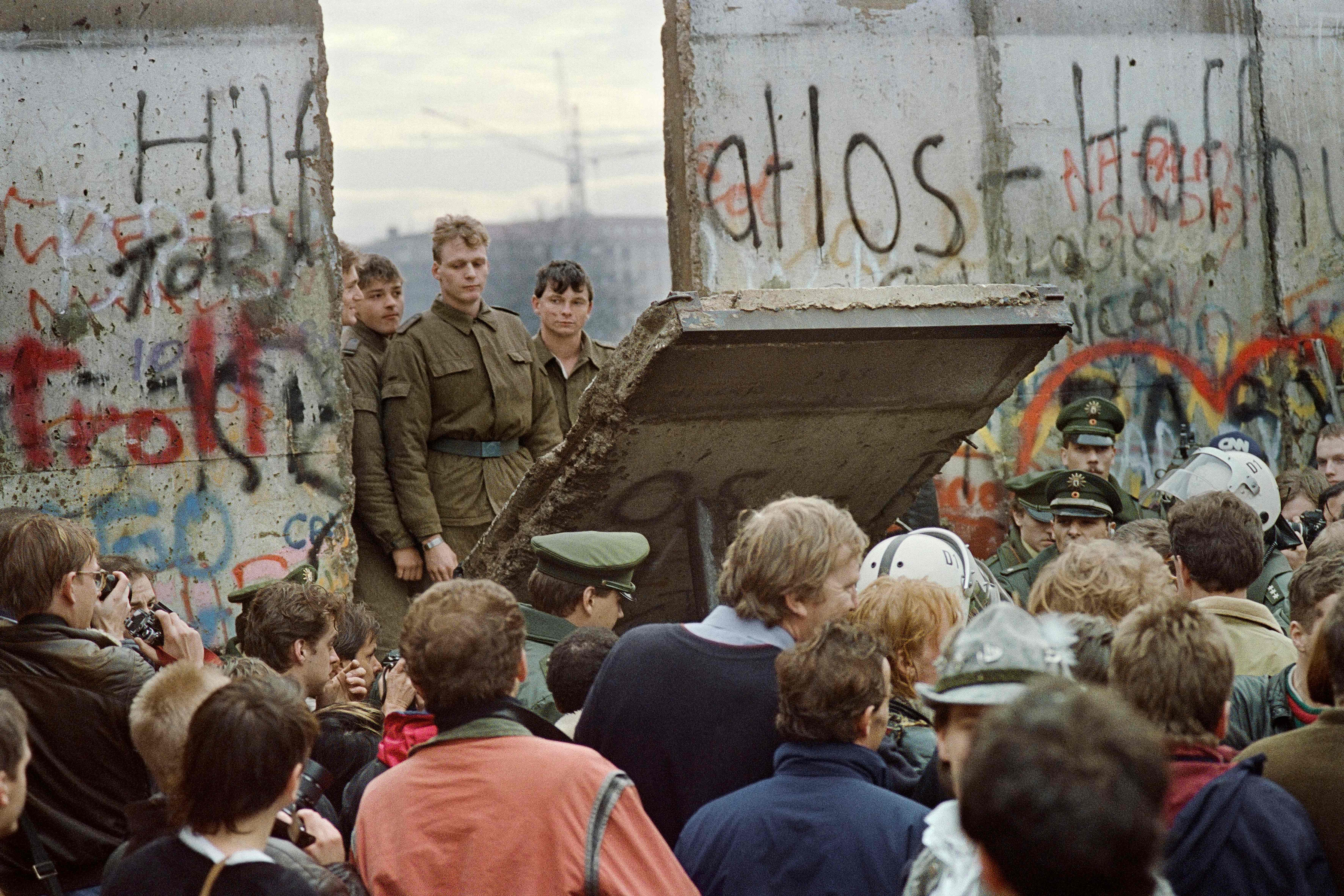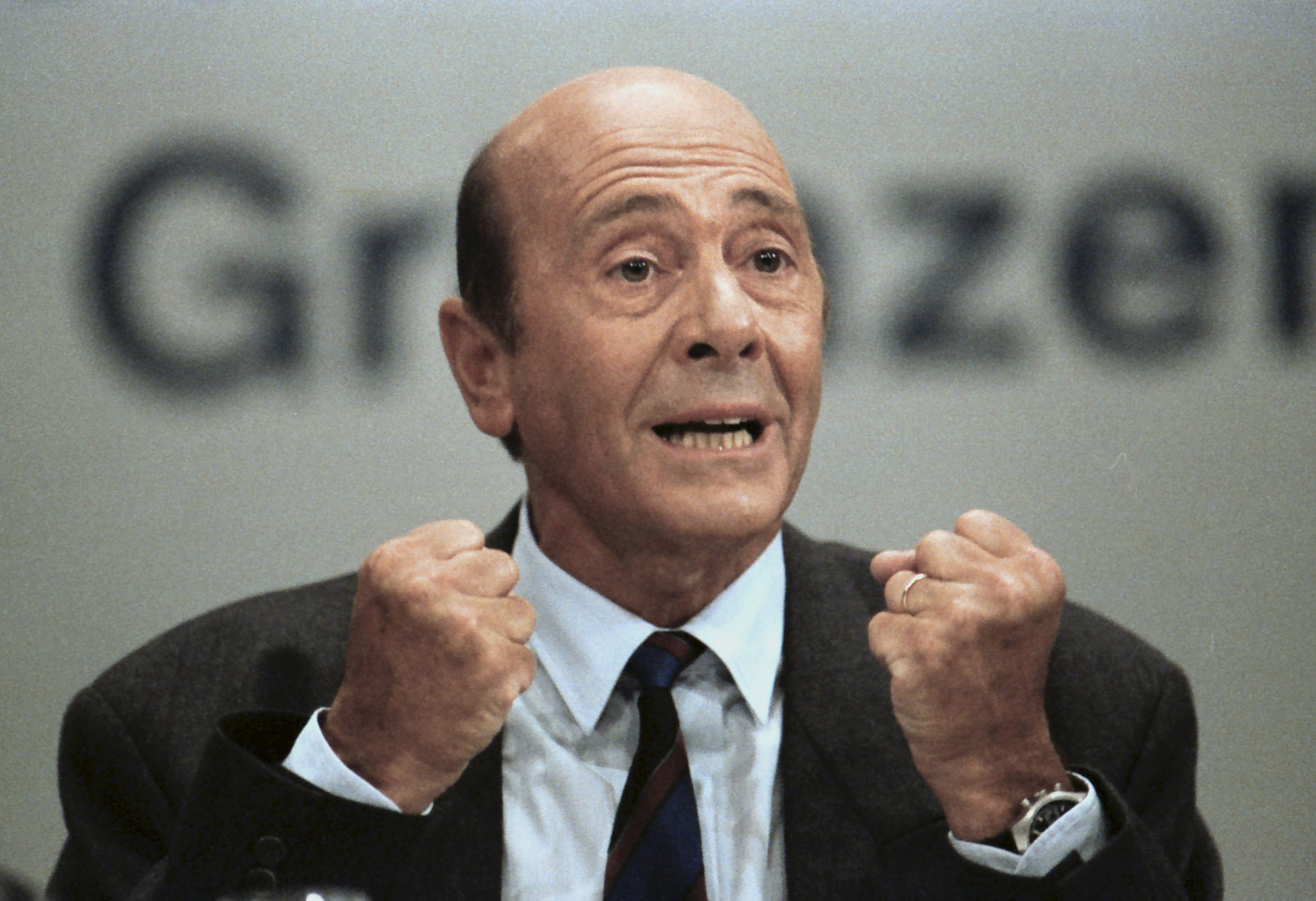The Berlin Wall & NATO
This year marks the 30th anniversary of the fall of the Berlin Wall, which changed Europe forever. It also marks the 70th anniversary of the North Atlantic Treaty, which has helped being stability to Europe through a period of rapid change. This year NATO will come back to London, its first home, as the UK hosts the NATO Leaders’ Meeting.
Throughout the Cold War, NATO played a vital role in deterring the Soviet Union and defending the Allies from the threat it posed to them, as well as cementing the trans-Atlantic security relationship and providing a framework for West Germany to be re-armed. At the same time, NATO was not simply a military alliance but also encompassed a group of countries that shared common values, including liberty, democracy and the rule of law. NATO had to adapt, however, after the dramatic fall of the Berlin Wall on 9 November 1989, which resulted in the reunification of Germany, the end of the USSR, the end of the Cold War and the reshaping of Europe.


The series of events that occurred between the fall of the Wall and the official end of the Soviet Union on 25 December 1991 transformed the international security environment and European security in particular. In this two-year period, a wave of democratic revolutions spread across Central and Eastern Europe. German reunification took place, the Warsaw Pact – which had provided for the collective defence of the Soviet Union and seven other European Eastern Bloc socialist republics – disbanded and the Soviet Union came to an end.
The fall of the Wall, which had physically divided Berlin for 28 years, separating families and impeding travel between Germany’s East and West, and which had been symbolic of the ideological divide between East and West, and the events that followed its fall had clear implications for NATO – some positive, some more challenging. The reduction in tensions between the world’s two superpowers, the United States and USSR, which had characterised the international security environment from shortly after the end of the Second World War onwards, meant that NATO Allies faced a significantly reduced threat of conventional military invasion and of nuclear war. At the same time, while NATO had always stood for democratic values, the disbanding of the Warsaw Pact and the end of the Soviet Union appeared to remove its raison d’être. For 40 years of Cold War, NATO’s primary purpose had been clear. But in the immediate post-Cold War context, with its Warsaw Pact counterpart no more and the Soviet Union also gone, NATO’s role – and indeed its survival – were far from certain.
For several reasons, however, the need for NATO was far from over. The first was that the end of the Cold War did not mean the end of security challenges, in Europe and beyond. Less than a year after the fall of the Berlin Wall came Iraq’s invasion of Kuwait, with war between a US-led coalition and Iraqi forces taking place in early 1991. These events led to NATO engaging in its first-ever operational roles, with the alliance monitoring events and providing air defence packages to Turkey between August 1990 and March 1991. The habits and patterns of cooperation and consultation forged over 40 years to tackle security threats to the Allies were clearly still as relevant as ever. Retaining NATO in this immediate transition period acted as an insurance policy, as well as ensuring much-needed continuity and stability amidst rapidly changing events. It would also prove vital for responding to conflict in the Balkans, which broke out in the early 1990s and continued throughout this decade.
Changes in the security environment also allowed for the relationship between NATO and its former adversaries to be transformed. From 7-8 June 1990, NATO Foreign Ministers met in a Ministerial Meeting of the North Atlantic Council in Turnberry, Scotland. They subsequently published a ‘Message from Turnberry’ in which they expressed their ‘determination to seize the historic opportunities resulting from the profound changes in Europe to help build a new peaceful order in Europe, based on freedom, justice and democracy’. In this spirit, they extended ‘the hand of friendship and cooperation’ to the Soviet Union and all other European countries. By doing so, NATO made clear that, from its perspective, the time of confrontation was over and that it wanted dialogue with its former adversaries.

As the wall was being torn to the ground, Manfred Wörner could not contain himself. The first German Secretary General NATO had ever had jumped into his car and drove to Berlin to witness, with his own eyes, the fall of the Berlin Wall. As the story goes, Wörner had not wanted to wait for the next flight to Berlin. However, in his haste, he did not warn anybody of his whereabouts. He reappeared at NATO Headquarters, Boulevard Léopold III Brussels two days later, tired but ecstatic. A page in history had been turned… and he was there.
A month later, in early July 1990 at the NATO Summit in London, NATO Heads of State and Government proposed a joint declaration to the member states of the Warsaw Pact in which they stated that ‘we are no longer adversaries’. The Alliance also reaffirmed its intention not to use or threaten force against the territorial integrity or political independence of any state, or from acting in any way that was inconsistent with the purposes and principles of the United Nations Charter and the CSCE Final Act. NATO also invited President Gorbachev, on behalf of the Soviet Union, and representatives of the other Central and Eastern European countries, to come to Brussels and address the North Atlantic Council.
NATO heads of state and government, meanwhile, invited the governments of the USSR, the Czech and Slovak Federal Republic, the Hungarian Republic, the Republic of Poland, the People’s Republic of Bulgaria and Romania to come to NATO to establish regular diplomatic links. In this way, the alliance aimed to share its thinking and deliberations with them in a historic period of change.
On 20 December 1991, NATO created the North Atlantic Cooperation Council (NACC), which has been known since 1997 as the Euro-Atlantic Partnership Council (EAPC). The creation of the NACC was a clear and practical display of ‘the hand of friendship’ that had been extended at the London Summit the previous year and was also a response to the demand from many former adversaries for practical cooperation as well as dialogue. As German Foreign Minister Hans-Dietrich Genscher said to US President George H. W. Bush at the time:
“We now have to decide how to help the Central and Eastern Europe countries and the Soviet Union: We cannot let them fail.”
The creation of the NACC allowed confidence to be built between NATO and its former adversaries. It also laid the groundwork for the formal launch of the Partnership for Peace (PfP) initiative in 1994, an opportunity to develop practical bilateral cooperation between NATO and many countries across a wider geographic area, and not simply with those who were former adversaries.
“When I took office as Secretary General of the North Atlantic Alliance I could not even receive the ambassador of any of the countries of Central and Eastern Europe in our headquarters… Three and half years later, here we are sitting around the same table“
Manfred Wörner, 21 December 1991
In the period between the fall of the Berlin Wall on 9 November 1989 and the dissolution of the Soviet Union on 25 December 1991, NATO provided stability and continuity. By reaching out to former adversaries, it helped smooth a period of rapid and volatile change. Many of the arrangements for cooperation and consultation, born in the immediate transition period between 1989 and 1991 and developed over the years since, endure.
To this day, NATO remains an Alliance of values; of liberty, democracy and rule of law, as well as a military alliance that defends, deters and projects stability beyond its borders. NATO’s success has been an important contribution to the promotion of those shared values and the spread of democracy.
